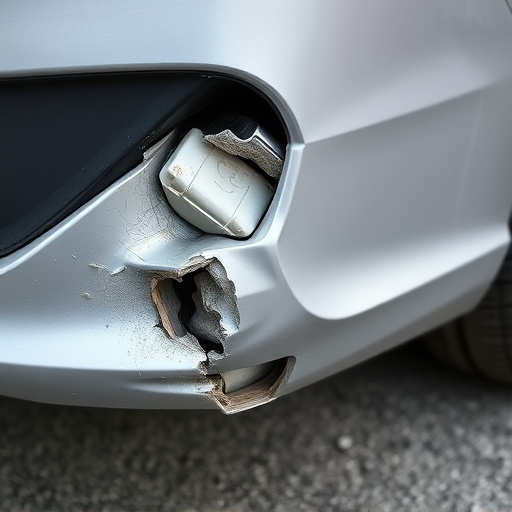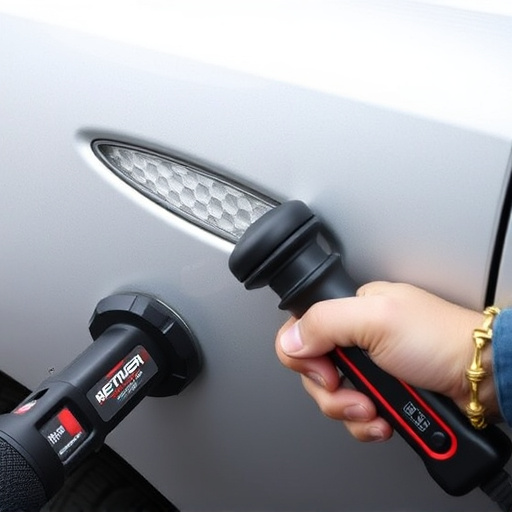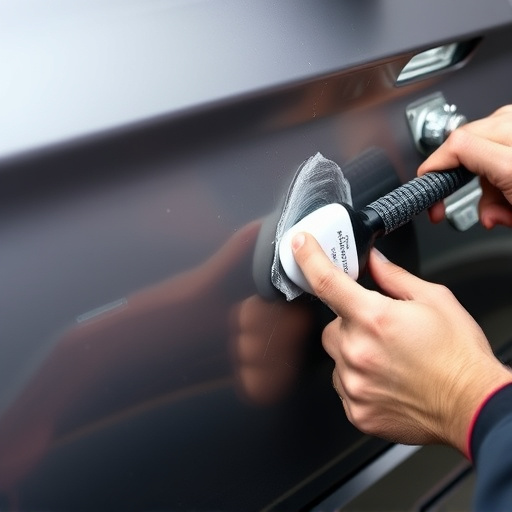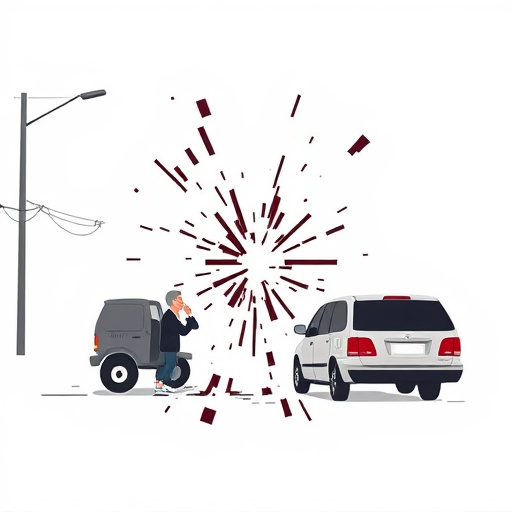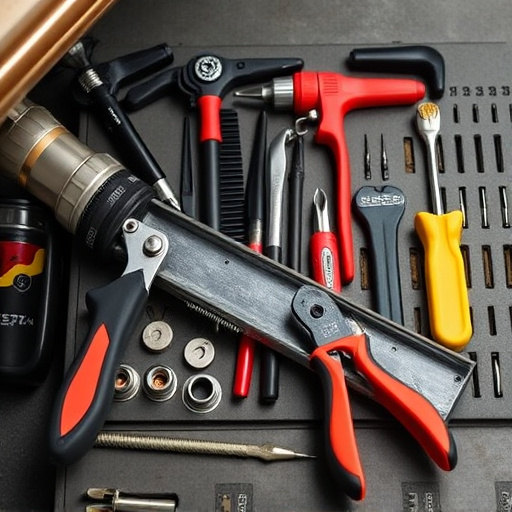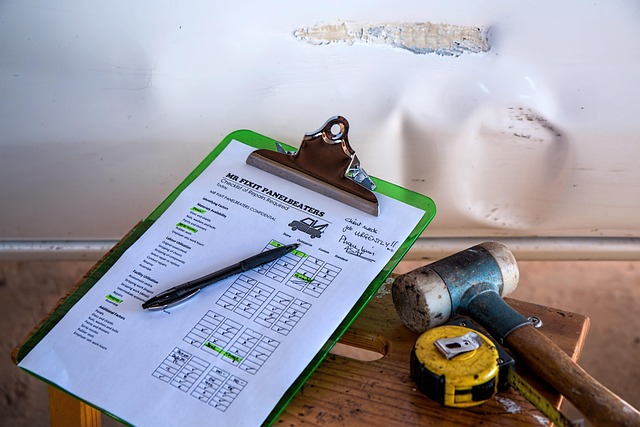Technicians in auto collision repair and fleet services work in hazardous environments requiring slip, trip, and fall risk mitigation. Anti-slip footwear, high-visibility vests, robust gloves, protective eyewear, non-slip mats, safety harnesses, and fall arrest systems are essential technician safety equipment to prevent accidents, promote safer working conditions, and protect workers, aligning with safety standards and fostering a culture of safety. Proper fit, regular inspections, training, task-specific gear selection, and following manufacturer guidelines enhance protection.
Technician safety equipment is an indispensable tool in preventing slip, trip, and fall accidents—a leading cause of injuries in various industries. This article delves into the critical role these tools play in safeguarding technicians, focusing on understanding specific risks, identifying essential gear, and adopting best practices for optimal protection. By equipping yourself with the right safety equipment, you can navigate work sites safely and confidently, reducing the risk of serious harm.
- Understanding Slip, Trip, and Fall Risks for Technicians
- Essential Technician Safety Equipment for Prevention
- Best Practices for Using Safety Gear Effectively
Understanding Slip, Trip, and Fall Risks for Technicians
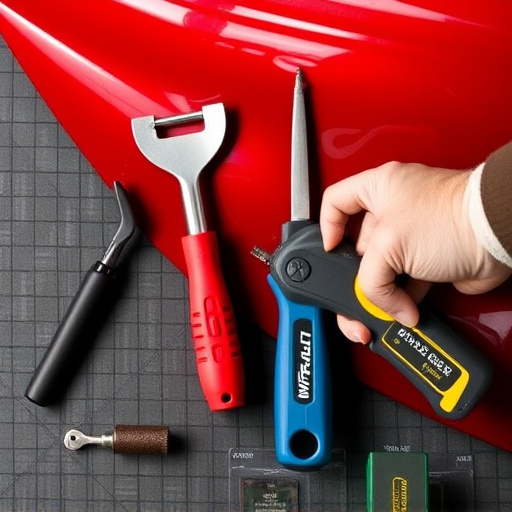
Technicians working in various industries, including automotive collision repair and fleet repair services, frequently encounter environments with potential slip, trip, and fall hazards. These accidents are a significant concern due to their ability to cause severe injuries, ranging from sprains and strains to more critical, life-altering traumas. Understanding the risks associated with these incidents is the first step towards mitigating them.
Technician safety equipment plays a pivotal role in managing these risks. From anti-slip footwear designed for vehicle repair services to high-visibility vests, these tools are essential in enhancing awareness and stability, especially in cluttered or dimly lit work areas. By investing in appropriate safety gear, technician productivity can be maintained while ensuring their well-being, thereby fostering a safer working environment across all sectors.
Essential Technician Safety Equipment for Prevention
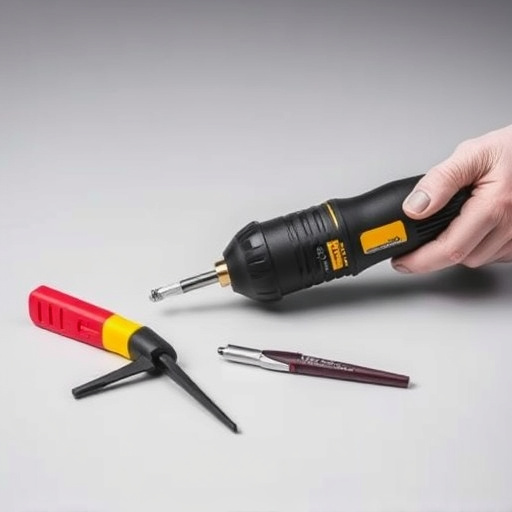
Technician safety equipment plays a pivotal role in preventing slip, trip, and fall accidents. Essential items include sturdy shoes with good grip, high-visibility vests for increased visibility on worksites, and robust gloves to enhance dexterity while protecting hands. These seemingly simple tools serve as the first line of defense against potential hazards often found in auto body repair or car scratch repair settings, where a fender bender can quickly turn into a safety concern.
Properly fitted protective eyewear is another critical component, shielding technicians from debris and potential impact hazards. Additionally, depending on the task at hand, specialized equipment like non-slip mats, safety harnesses, and fall arrest systems might be necessary. Investing in these technician safety equipment not only ensures compliance with safety standards but also fosters a culture of safety, ultimately safeguarding workers and preventing costly accidents.
Best Practices for Using Safety Gear Effectively
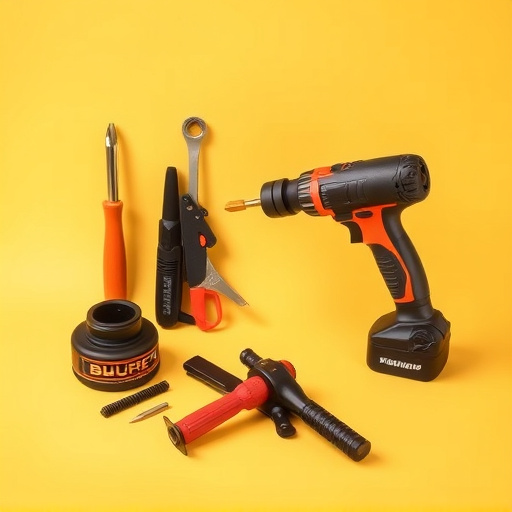
Using technician safety equipment effectively is paramount to preventing slip, trip, and fall accidents. Best practices involve ensuring gear fits properly and is in good condition. Regular inspections and maintenance of safety equipment, such as gloves, boots, and protective clothing, are essential to guarantee their integrity. Technicians should also be trained on how to wear the equipment correctly, including proper lacing and fitting procedures for shoes and boots.
Additionally, it’s crucial to select the right equipment for specific tasks. For instance, in car collision repair or car body repair, specialized gear designed for metalworking or paint handling should be used. Even simple tasks like dent removal require appropriate safety measures to protect against sharp edges or flying debris. Always follow manufacturer guidelines and use equipment that complies with industry standards to maximize protection.
Technician safety equipment plays a vital role in mitigating slip, trip, and fall accidents, ensuring technicians can work securely and efficiently. By understanding the risks specific to their trade and equipping themselves with essential gear, such as robust footwear, high-visibility clothing, and fall protection harnesses, technicians can significantly reduce the potential for harm. Adhering to best practices for using safety equipment, including regular inspections and proper fitting, further enhances their safety during daily tasks. Investing in comprehensive technician safety equipment is not just a regulatory requirement; it’s a responsible step towards fostering a culture of safety and productivity on the job site.

